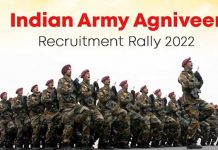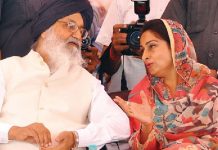 The political pundits across India are busy in analysing the outcome of the first phase of the massive elections, which sealed the fate of 91 prospective law makers across 20 states and Union Territories. The voting for Assembly polls also took place in Andhra Pradesh, Sikkim, Arunachal Pradesh and some seats in Odisha simultaneously. Any prediction of the poll outcome is difficult on the basis of the electorates’ behavior, which appears to be more intriguing this time.
The political pundits across India are busy in analysing the outcome of the first phase of the massive elections, which sealed the fate of 91 prospective law makers across 20 states and Union Territories. The voting for Assembly polls also took place in Andhra Pradesh, Sikkim, Arunachal Pradesh and some seats in Odisha simultaneously. Any prediction of the poll outcome is difficult on the basis of the electorates’ behavior, which appears to be more intriguing this time.
Its reasons could be attributed to the style of campaigning, which have failed to trigger off intensive political campaigning at the grass-root level amidst noisy, if not irrelevant election debates on various media channels. However, it is obvious that the ruling Bhartiya Janata Party (BJP) dominated National Democratic Alliance (NDA) is not facing the challenge from its political rivals, but the apathy of its party workers mostly from the Rashtriya Swayam Sewak Sangh (RSS).
Many believe that the cool response of these party workers enabled the Congress Party, which lacks party infrastructure at local levels, form governments in the erstwhile BJP-ruled states of Madhya Pradesh and Chhattisgarh. In Rajasthan, the victory of the Congress Party was already predicted due to the poor image of the erstwhile chief minister Vasundhara Raje, who despite some efforts could not be replaced by the BJP leadership before the state polls.
The 2014 Lok Sabha polls was fought during a visible decline of the Congress Party-led United Progressive Alliance (UPA) and the emergence of a reinvigorated BJP under Narendra Modi, who then had already established himself as the undisputed leader of the country’s most prosperous state Gujarat. Modi’s frequent interactions with the non-resident Indians across USA and Europe had enabled him to raise huge funds for his election campaigns. This time, however, BJP has raised huge funds through election bonds, now under the Supreme Court scanner. The political challenge for the ruling party has become formidable due to the poor governance accompanied by rampant corruption in the state like Uttar Pradesh, where a novice has been installed to rule the state having hardly any administrative experience. The attempt to compensate for this inadequacy through rhetoric could not cut much ice in the constituencies adjacent to the national capital New Delhi, NOIDA and Ghaziabad.
The apathy of the voters was also visible in the BJP-ruled Uttara Khand, where the voters’ turnout was only 57.85 per cent for the state’s five Lok Sabha seats. The low polling in Bihar with 50 per cent voting for four seats indicate that the grand alliance or mahagathbandhan could not assert against the NDA. In UP, the result are difficult to be predicted, because for eight seats 63.69 per cent voting where two central ministers General (retired) V.K. Singh and Mahesh Sharma, are fighting for their political survival. The 81 per cent voting on the two seats of West Bengal may be indicative of polarization in the state on communal lines.
The electorate is witnessing an assertive fourth generation scion of the Nehru-Indira Gandhi clan, Rahul, who despite many derogatory campaigns in the social media, has emerged as a converging point for the Prime Minister Narendra Modi. Modi was immensely benefitted by the speech of the then Congress Party president Sonia Gandhi describing Naendra Modi as maut-ka- saudagar –the man who is responsible for the death of innocent people, or someone in the ruling party calling him chaiwala or a tea vendor. Rahul and his supporters in private conversations express their gratitude to the dirty politicking cell of the ruling party for making false and irresponsible comments making him a central figure in the country’s political stage.
There was heavy polling during the first phase except in a few areas of Jammu and Kashmir, where the electorate dared the terrorists and case votes. The polling was 35 per cent. It was much more than expected in the strife-torn region. Except the killing of a sitting legislator of Chattisgarh in the Naxal-infested district of Dantewala, the electorate from the cool Jammu-Kashmir and the vast north-eastern region comprising Arunachal to the warmer climate of coastal Andhra Pradesh, the polling was peaceful.
The Election Commission of India on March 10, 2019, had announced a seven-phase elections schedule for the Lok Sabha polls.The second phase polling across the country is to take place on April 18, 2019. The three states Uttar Pradesh (UP), Bihar and West Bengal will be voting during all the seven phases of the ongoing elections.
The second phase on polling in UP will witness polling in Mathura, where film star Hema Malini is contesting again on the BJP ticket along with Agra and Aligarh. The three constituencies in West Bengal that will include Darjeeling and five constituencies in Bihar will vote on this day. These states elect as many as 162 Lok Sabha members. UP alone sends 80 members to Lok Sabha. The states of Bihar and West Bengal elect 40 and 42 seats respectively.
Odisha polling
The southern Odisha, the Naxalite-infested districts comprising Koraput and Malkangiri have been covered in the first phase of polling. The voters’ behavior in these areas, which were a part of the Madras presidency during thirties, differ with the rest of the state. The polling in first phase in four Lok Sabha constituencies and 28 Assembly seats were conducted peacefully, while in the neighbouring Chhattisgarh a BJP legislator was killed.
It took place in Koraput, Nabarangpur, Kalahandi, Berhampur Lok Sabha constituencies and 28 Assembly seats under them. The para-military troops were deployed formore than 60 lakh voters are to exercise their franchise in 7233 polling booths. Out of them 2375 booths have been identified as critical polling booths. In Malkangiri, the EVM were transported by helicopters.
In this region, the main fight is between Biju Janata Dal and the Congress Party. The BJP could not dent in these tribal areas. It has presence in the coastal districts only. However, at Jeypore, the business hub of the Koraput district, BJP is trying to woo voters, but it could not make much impact so far.
Changing mood
The poll strategists of the ruling BJP, who must have been worried due to the apathy of the party volunteers in some parts of UP, feel elated from the much better response from the coastal Andhra Pradesh and a part of Odisha. In spite of clashes in Andhra Pradesh in which two people were killed, BJP is confident that it is going to have a presence in this coastal state with its ally YSR Congress. It goes to the credit of BJP leadership that it ended its alliance with TDP to reap bigger political gains in the state, where the perception is that Sonia Gandhi has deliberately ensured its bifurcation, and Jagan Reddy was falsely implicated in false cases by the UPA government.
Jagan’s father, YS Rajsekhar Reddy, had died in a helicopter crash within a year of being elected as the chief minister of the state. He had trounced TDP by his aggressive pro-farmer policies, but he lost favor of the Congress high command. Even before the mortal remains of YSR were brought back, people started shouting Jagan as our CM, which many thought was Jagan’s screenplay, but whatever by the evening of September 2, 2009, more than 90 MLAs signed asking for Jagan as CM. Jagan was very young at that time, may be 36 years. The Congress leadership ignored him and appointed Konejati Rosaiah as the CM. This led to dissent among Jagan and the loyal followers of YSR, who felt their leader was cheated. They established Party or Yuvajana Shramika Rythu Congress Party (YSRCP), which is now an ally of BJP.
The polling trend in Andhra Pradesh (25 seats) and Telangana (17 seats) of more than 66 and 61 per cent must have satisfied the BJP leadership of their intensive campaigning and poll alliances in these states.
Interestingly, the BJP, which is considered to be a rightist pro-Hindu outfit, has a progressive face in the Andhra Pradesh. The Christians in the coastal districts too endorse BJP, may be due to its alliance with Jagan’s party. The same political rise for BJP is not visible in Tamil Nadu, where its alliance with the ruling party has so failed could not make any impact on the electorate. Both DMK and AIDMK are using Hindi banners and pamphlets to woo these new voters. However, it is difficult to predict that the voters in the state will support the Congress or BJP in near future.
Northeast
At Aizawl, the capital of Mizoram, the BJP has set up a huge party office, which indicates that it is ready to replace the Congress as a main political outfit in this sensitive state. It may not be able to win the Lok Sabha seat from the state, but it is quietly percolating down by enrolling a large number of volunteers in this pre-dominant Christian state. During the first phase of polling Mizoram and Manipur witnessed a voters’ turn out 60 and 78.2 per cent respectively. These states elect one seat each to the Lok Sabha.
The large number of voting in Tripura to the tune of 81.8 per cent for its one seat may go in favor of the ruling BJP, which had trounced a left party regime in the state polls. In Sikkim, BJP has hardly any presence. There was 69 per cent voting for its one seat to the Lok Sabha. The heavy polling of 78 per cent in Nagaland reflects the changing mood of the electorate in this strife-torn stare. In Arunachal, BJP may reassert its position for two seats, where polling was more than 66 per cent.
Black Money
The Election Commission has succeeded in unearthing more than 2600 crores, which included 607 crores in cash, liquor worth 198 crores, drug and narcotics worth 1091 crores, precious metal worth 486 crores, freebies & other items worth 48 crores.
The seizure of 11.5 crore in cash at a cement godown in Vellore district by the IT investigation wing on Monday appears to have confirmed the Election Commission’s worst fears about the influence of money in the Lok Sabha polls in Tamil Nadu. Intelligence agencies have estimated that more than 10,000 crores could be pumped in by various political parties into campaigning and for bribing voters in TN and Puducherry before the second phase of polling on April 18.
The country may witness more drama and mudslinging in the ongoing polls of the Lok Sabha Elections, which are being conducted in seven phases from April 11 to May 19 this year.
letters@tehelka.com












